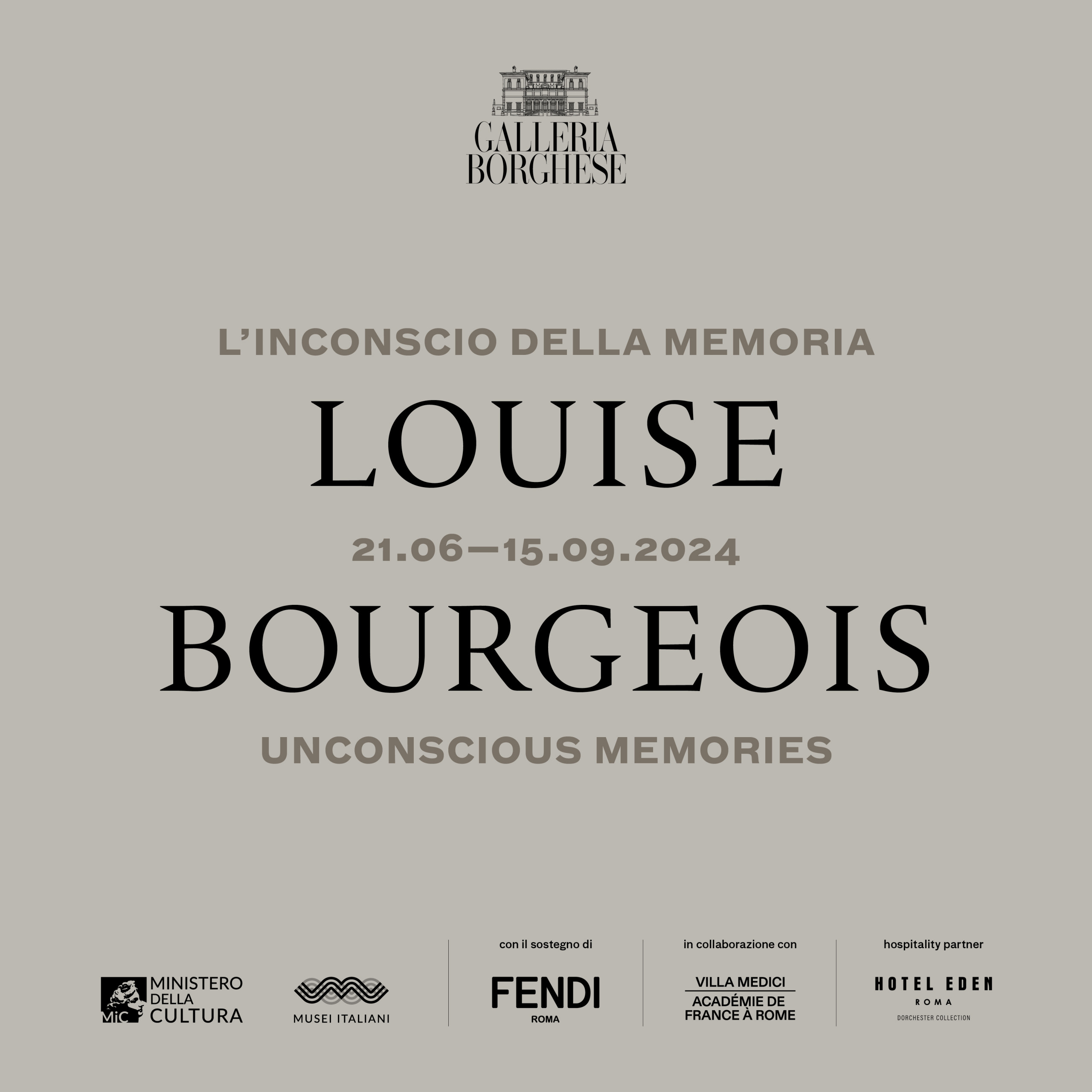INTRO

I immediately loved Rome (…) for the Villa Borghese, I spent the afternoon there, both in the gardens and inside. It was wonderful. It is a dream, 6 Berninis. Louise Bourgeois, letter from Rome, 8 November 1967
Louise Bourgeois (1911 Paris – 2010 New York), the first contemporary woman artist to exhibit at the Galleria Borghese, is renowned as one of the most influential artists of the past century. Louise Bourgeois: Unconscious Memories is her first major exhibition in Rome and places her profound contributions to sculpture in dialogue with the Galleria Borghese’s collection.
In 1967, Bourgeois began working in Italy for the first time and set up a studio in Pietrasanta, Tuscany. This trip marked a significant turning point in her career, inspiring her to mold new forms and introduce marble into her practice. Over the next several years, she returned to Italy for long stretches at a time and created some of her most iconic and seminal works.
The sculptures displayed in selected rooms of the Galleria Borghese date from after this pivotal period in Italy.
In her twenties, Bourgeois studied art history at the École du Louvre in Paris, where she also served as a guide. Her engagement with classical art, particularly with Scipione Borghese’s collection—which has been on display at the Louvre since 1808—resonates in the works selected for this exhibition.
The show explores themes of metamorphosis, memory, and emotional and psychological states, bridging the past and the present through juxtapositions of contemporary and classic works. Bourgeois’s sculptures engage in a vibrant dialogue with classical and baroque art, revealing her radical reinvention of traditional forms and narratives, with a particular focus on gender, identity, and individual and collective memory.